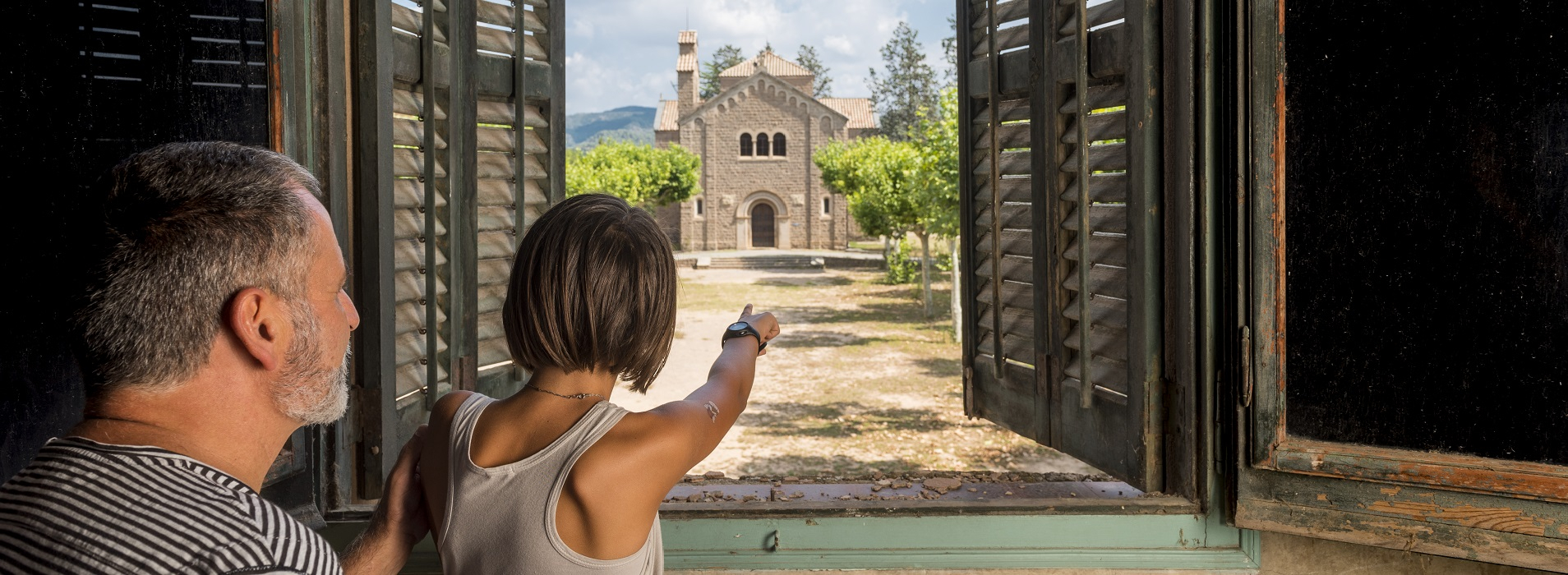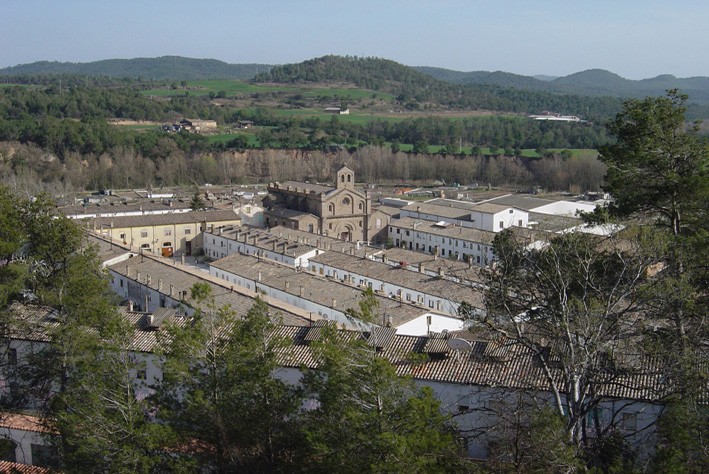

L'Ametlla de Merola
It is the colony located further south of the Berguedà region. It belongs to the municipality of Puig-reig, although it is closer to the nucleus of Navàs (Bages).
History
The remote origins of the colony of the Ametlla de Merola we have to look for in Vilassar de Dalt (Maresme), from where he was the son Mateu Serra, an entrepreneurial manufacturer that in the mid-nineteenth century acquired the land where today we find L 'Ametlla to build a textile factory that exploited the river Llobregat water as a source of energy.
In 1864, the factory was begun, and fourteen years later, in 1878, 500 people already worked there and ninety houses, a church and a building with capacity to accommodate one hundred and forty girls were built. The growth of the colony, however, did not stop here: in 1880 the owners acquired new lands to expand the colony, the construction of the new lock was started in 1890 and in 1913 the Ametlla de Merola already occupied 98,577 m2.
The growth of the colony, however, was not exempt from tensions and situations of conflict. It is worth highlighting the events that took place in 1890. That year, a series of protests, strikes and mobilizations of the workers, which also affected the majority of the Llobregat colonies, led to the Serra to accentuate the control measures towards the population of the colony: the most immediate response was the dismissal and expulsion of 200 workers from the factory. Subsequently, the figure of a sole director for the whole factory was imposed, the priest became a central figure of the colony - the watchman of the owner, the intermediary with the workers - and, ultimately, s "He resolutely opted for the model and paternalistic discourse of offering services, protection and stability in return for workers to limit themselves to work, obey and not break the" social peace. "
After the Civil War (1936-1939), and despite the difficulties of the first years of the post-war period, framed by misery, the repression of the defeated, the autarky, the electric restrictions and the extrapolation, the colony of L'Ametlla from Merola, I was still alive until the sixties, when the first signs of crisis in the textile sector were noted. The owners faced these difficult times by renting some services from the colony to individuals, reducing the workforce and subsequently renovating machinery to be competitive. During the eighties, there were also very complicated situations: the floods in November 1982 and the crisis of the end of the decade, which meant a drastic reduction in the workforce. The factory, however, continued to operate until 1998.
Description
He was the same impeller of the Almond of Merola, Mateu Serra, the one in charge of defining and designing the general structure of the colony. Mr Serra, who had been mayor of Vilassar de Mar, had the opportunity, therefore, to create a new "people" in a planned and ordered way. The central element of the colony, the factory, was located in the middle of the urban complex, between the houses for the workers and the house of the owner. With a good forecast capacity, around the factory, space was left available if the productive space was to be expanded.
An particular feature of L'Ametlla is that the Serra took advantage of the remains of an old flour mill, remodeled it, expanded it and converted it into its residence in the colony. Unlike other colonies, the house of the masters of L'Ametlla did not become a spectacular and ostentatious tower, but a large and comfortable house with an ancestral appearance.
Workers' homes were built along long streets lined with three places: that of the church, the market and the theater, which is also the access to the factory. The first houses, those of Carrer Vell, only had 50 m2. Subsequently, they were built more widely. Most of the existing houses still have a ground floor and a floor above it. They are semi-detached single-family houses that offer a small exit that communicates with the kitchen. This type of housing, in white, means that the Almond presents, more clearly than other colonies, a village aspect, a town that reminds us of the former houses of the craftsmen and fishermen of the Maresme; from where the founder of the colony was the son. The whiteness of the whole colony contrasts with the gray stone of the church and the factory.
Spaces of interest
The theater: it was built in 1902. Currently, the centenary Pastorets de l'Ametlla de Merola are still present.
The church: building built in 1882.
Coffee: traditional meeting point, leisure, conversation and amelets recreation.
Walk of the banana tree: pleasant way that leads us from the residential nucleus of the colony to the lock.
The meander of the river: the colony of L'Ametlla de Merola is located at a point where the Llobregat river draws a meander around which you can enjoy an attractive and diverse river landscape (riverside vegetation, orchards, fields, forest , the colony, etc.).
→ For information on visits here
- Town: Puig-reig
OFICINA DE TURISME DEL BERGUEDÀ
Carretera C16 Km 96
08600-Berga. Phone (+34) 654 125 696
Monday to Friday: 9 to 14h.
Saturday: 10 to 14 & 16 to 18h.
Sunday and holidays: 10 to 14h.
E-mail: turisme@elbergueda.cat
[Premsa]
Other

 English
English Follow us
Follow us







![[Tancar]](/plantilles/bergueda/img/tancar.png)

















